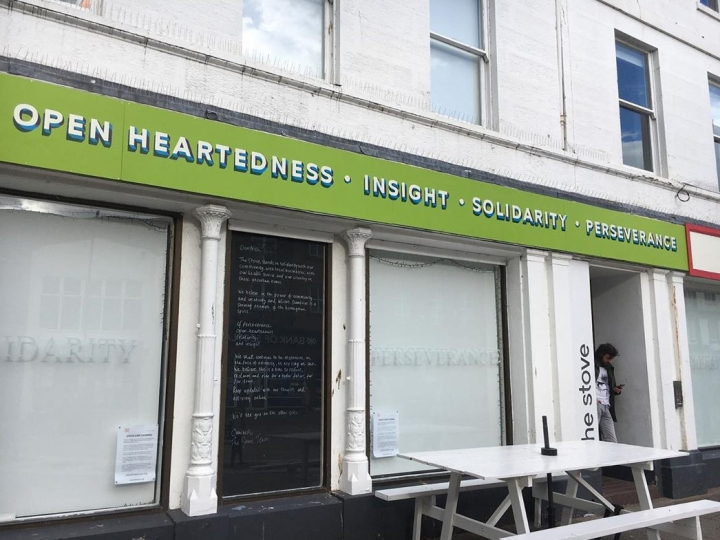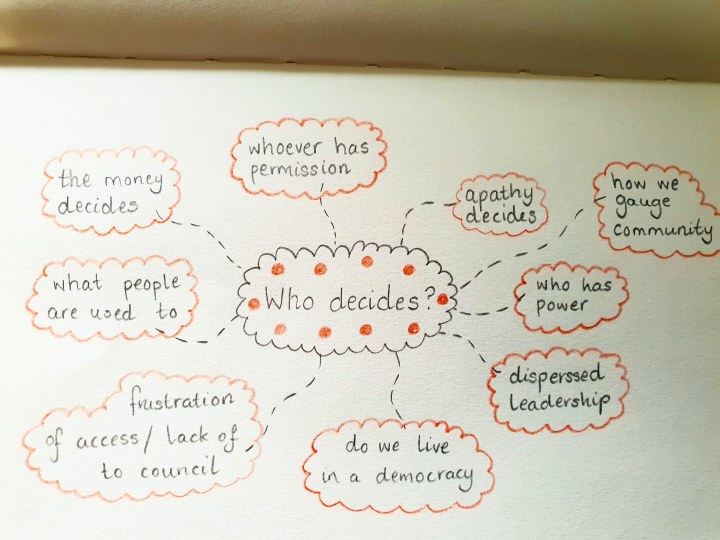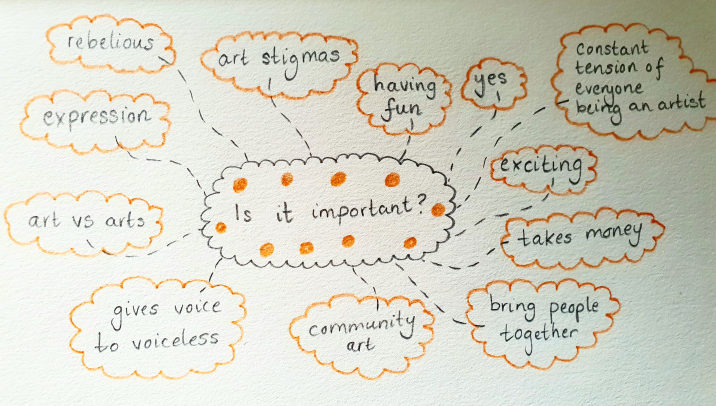
20.07.20

Fabric is a peer-to-peer development programme, run by Creative Dundee, which supports individuals who are passionate about Dundee and want to build on their creative leadership journey. Participant Samantha Sherriff wrote a piece about her reflections on Day 4 (the last day) of the Fabric programme 2020. You can also read Sam’s Fabric journey here.
I wrote about the Fabric programme in my previous post and we’ve just completed the programme – all altered for online communication through lockdown. Huge thank you to Claire and everyone involved from Creative Dundee for making the programme happen, as well as the guest speakers we had, and all the participants for their honest sharing and communication. I’ve really enjoyed the sessions we had, and felt that the format of the zoom meetings didn’t take away from what we discussed and learned over the weeks. I am however very keen to meet everyone in person, and chat in a more natural environment.
The Stove Network is a public arts space/facility/resource for locals (and wider region) in the high street of Dumfries, Scotland. This organisation connects with its local community while supporting creatives and providing/facilitating opportunities and events that covers a range of art disciplines. We had members of the team as our guest speakers: Katherine Wheeler, Liam Morrisson-Gale, Stuart Macpherson, Martin O’Neill, and Graham Rooney – all who were friendly, encouraging, fun and insightful!
I can’t wait to visit The Stove Network in person, there seems to be a fantastic energy there if the team and their presentation are anything to go by. The Stove Network was described to us as an engine for ideas that create community lead activities. They harness creativity as their tool, using a civic space to collate, create, and support artists and locals. This civic space came into existence because the location needed it. The town center had empty shops, was outdated, deprived, and the question was posed; what is the purpose of a rural market town in this century? I find it inspirational to grow a community/civic space for people where it’s needed and as a response to its location. To use art to renovate, connect, engage, teach and entertain with all of the community – young and old. ‘Community lead’ was a term that resonated with me, and I loved how Kat explained that they were putting artists in the center of the town, where they are part of the community. The Stove Network also addresses wider challenges and keeps current. They have a signboard outside that they update in tune with what they are doing and what’s going on locally and globally. It’s a subtle way to keep a live presence in the high street while reaching out to the community silently and creatively. (We saw an awesome shot of an artist hand painting text on the windows.) With covid-19 and lockdown this year, the signboard has been updated listing 4 key themes that offer hope to get through covid and to look forward into the future.


During our sessions in Fabric, we have talked about civic spaces and how important they can be for building strong relationships and reaching wider audiences. Being able to access a space where you feel welcome that is accessible, and provides free facilities. It’s great to see that after our discussions about leadership and civic spaces, The Stove Network team’s values were all on the same lines, while also providing us with new insight into their personal experiences. One thing that stood out to me, and I will take away, is ‘testing ideas’. To not get caught up in planning for long periods of time, but to make small tests/ small bets. Sometimes an idea can be tested with what is already accessible to you. With excessive planning and too much talk, a project or an idea may not work/have the wrong aim, and you’ve wasted time and planning before testing the waters! Over time the Stove’s work has developed into: career development for the community and youth, (not just for creatives) and a community lead planning agenda. Again, this overlaps with previous Fabric discussions about community involvement and having team members take on leadership roles. ‘Letting go’ while providing support and encouragement.
By the time we reached our break, I felt inspired and was focusing on these following qualities for what makes a good creative organisation/leadership/project/group:
After our break we were split into groups and discussed prompts about public art/ creative engagement to get us thinking, discussing and debating. These were fun as we had the Stove team involved as well! Some ideas that were shared from the groups below:



To close our session we were asked to find a visual way to express/plan/visualize our future goals. What does your future look like? What do you want to achieve? I found this a lot harder than I expected, which is actually really insightful as it showed me that I have a lot more planning and research to do in order to narrow down what I’d like to achieve/see creatively in the future. I’ve always imagined a physical civic space, but after our sessions in Fabric, this doesn’t quite fit in with what I’ve learned and how I now see the future. I may also be influenced by the covid-19 lockdown and the limitations that come with it. There are wider audiences (at home) who have been able to access art exhibitions, workshops and events who previously missed out, and it’s opened my eyes to new ways of facilitating art projects as well as being part of a community virtually. (Also from experience with Creative Dundee’s Amps Network virtually, and developing the Fun A Day Dundee online community; FADDCreatives) There are more groups/platforms/communities to consider and I’m looking forward to developing these.

If you would like to support us in creating even better content, please consider joining or supporting our Amps Community.